The best power meters will help you make the most of your cycling, helping you calculate efforts, training load, track your fitness and more.
Once the reserve of professional riders, power meters have gained significant traction across the recreational side of cycling in recent years.
The popularity of indoor cycling has showed more cyclists the benefits of training and racing with power, prompting massively increased competition in the power meter market.
Through our meticulous and independent testing, we bring you a definitive guide to the best power meters available in 2024.
We test all power meters rigorously, on an indoor training and riding outside, cross-checking the data readings with other power meters to determine accuracy. We also assess power meters on how easy they are to install and their durability.
You can read more about what makes the best power meters by jumping to our buyer's guide.
Best power meters in 2024
Favero Assioma PRO MX power meter pedals

- Type: Power meter pedals
- $759 / €750 as tested
- Accurate and dependable data
- Supplied with Shimano SPD cleats
he Favero Assioma PRO MX power meter pedals earned a rare five-star score in testing.
Their accuracy and consistency matched our benchmark power meters while costing much less.
Being power meter pedals, the Favero Assioma PRO MX are a breeze to swap between bikes. The pedal bodies seem good quality too, which should help them survive the rigours of off-road riding.
To round things off, battery life is also impressive.
They could be the best off-road power meter pedals around.
Favero Assioma Duo power meter pedals
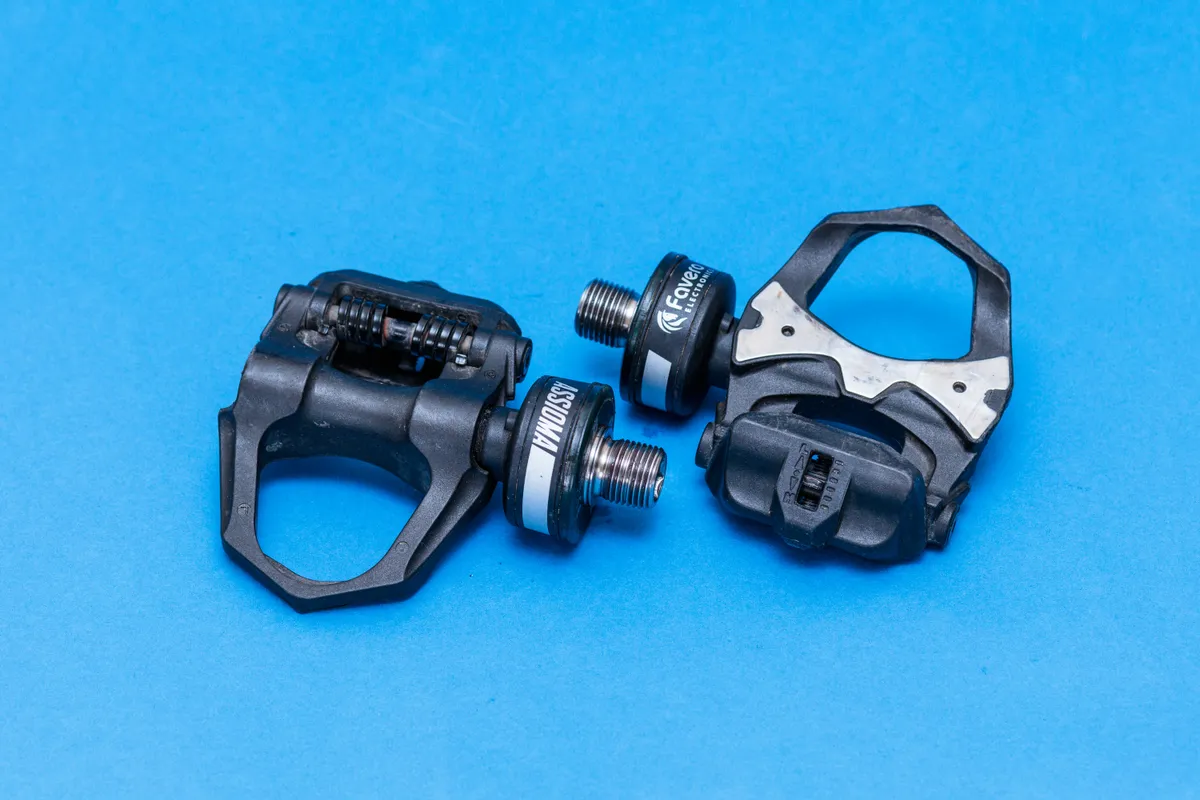
- Type: Power meter pedals
- £639 / $815 / €695 as tested
- Accurate power readings and rechargeable battery
- Cleats aren't the best
The Favero Assioma Duo power meter pedals give accurate and consistent power readings for the left and right sides, even when switched between bikes, thanks to the power-meter electronics housed in pods on each pedal.
The pedals have rechargeable batteries with a claimed 50-hour battery life. This is a real win when compared to other power meter pedals that rely on coin cell batteries.
Favero has its own dedicated smartphone app that enables you to update the pedal firmware, check battery levels and access product support.
Favero provides its own cleat system with these pedals, which is similar to Look. Unfortunately, the cleats don't offer a huge amount of adjustability and are slightly slippery to walk on.
Garmin Rally RS200 power meter pedals
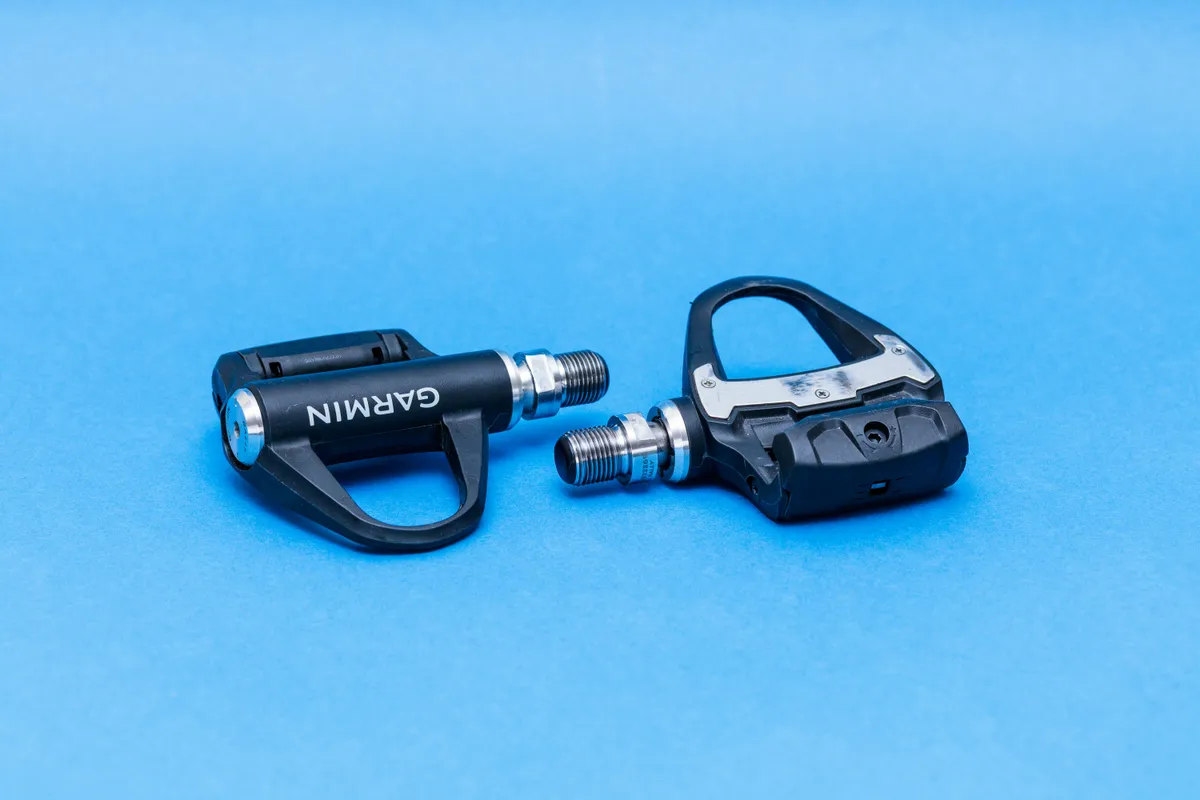
- Type: Power meter pedals
- £969.99 / $1,099.99 / €1,099.99 as tested
- Best-in-class cleat compatibility and accurate data
- Premium price tag
Garmin's RS200 Rally pedals are the first Shimano-native power meter pedals, meaning they can be used with Shimano SPD-SL cleats, which makes them a good option if you're already using Shimano road pedals.
Our testing found the readings from the RS200 Rally pedals to be accurate, although it did take a few seconds for the pedals to start transmitting the data. But this will only really be an issue for track or hill climb cyclists, where every second counts.
The price tag might be off-putting to some, but this is comparable to many other power meters and these are class leaders in many ways.
Quarq DFour DUB power meter
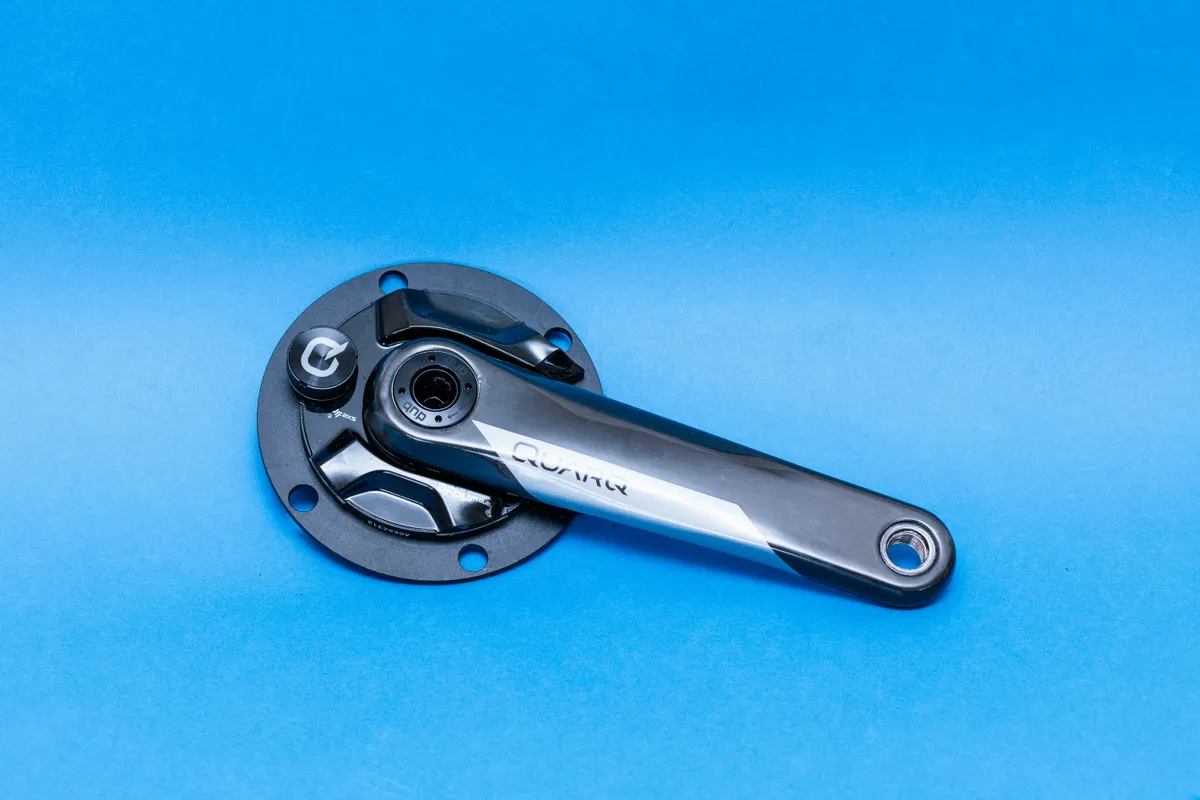
- Type: Power meter spider
- £549 / $595 / €619 as tested
- Compatible with most drivetrains
- Accurate and reliable power and cadence data
The Quarq DFour DUB is a spider-based power meter that integrates with SRAM's DUB crank and bottom bracket.
Thanks to SRAM DUB's compatibility with other drivetrains, this power meter will work with pretty much all other drivetrains on the market and is easy to install. Just make sure you have the right bottom bracket.
The power meter measures total power produced by both legs and it proved accurate in testing, as did its cadence readings. There was a small delay before the data was picked up by our tester's cycling computer, but only by a couple of seconds.
The power meter might not have the same advanced features as others, but it provides all the data most cyclists will need.
Stages Power LR Shimano Ultegra R8000 power meter
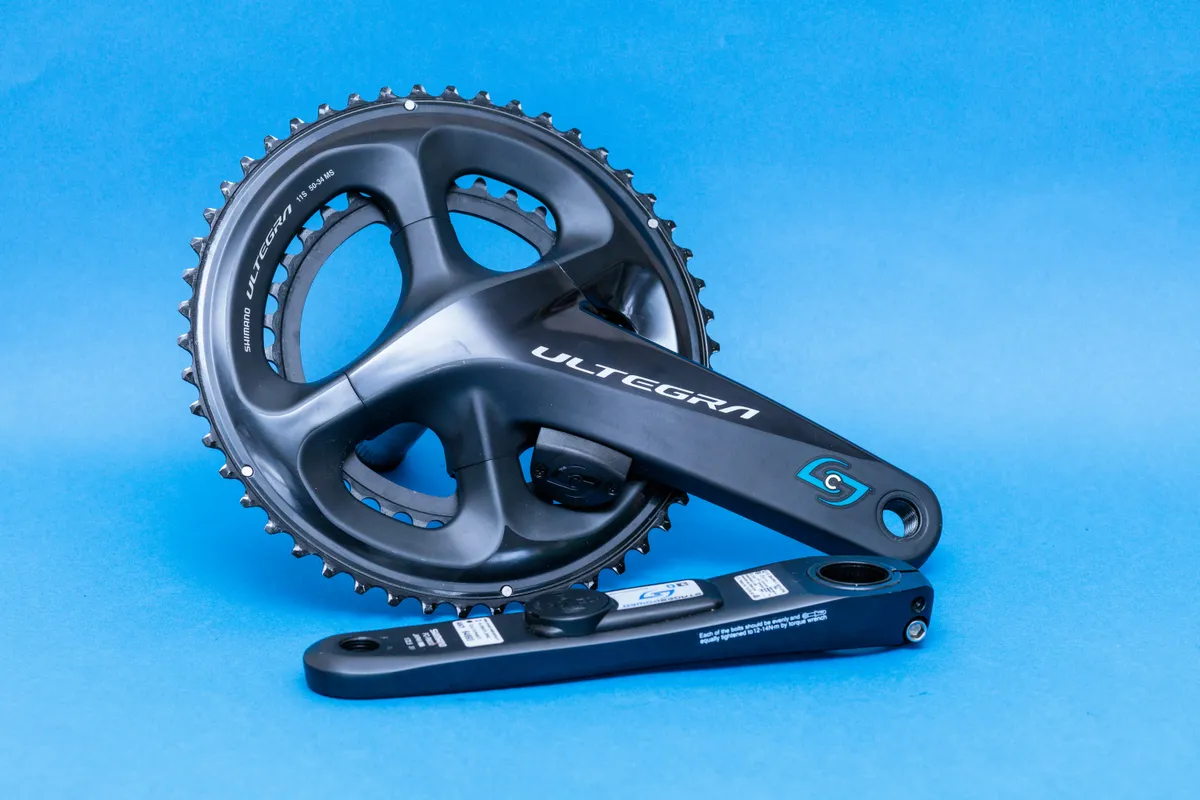
- Type: Power meter crank
- £715 / $789.99 / €849 as tested
- Maintains the same front shifting performance as Shimano
- No dual-sided SRAM or Campagnolo cranksets
Built around Shimano Ultegra R8000 crankset, this left/right power meter from Stages offers a fit-and-forget solution that retains the same shifting performance as standard Shimano cranksets.
In testing, the dual-sided power meter held up well, delivering data that was in line with other benchmark power meters. That said, pedalling with one leg did cause a delay in data feedback, but this will only really be an issue for cyclists completing one-legged drills.
There is a coin cell battery in each crank arm to power the separate power meter internals. These are easy to replace and the casing stops water from getting in.
The only real thing to note with this power meter is that the left/right dual-side power meter option from Stages is not available for SRAM or Campagnolo cranksets.
Verve InfoCrank Classic
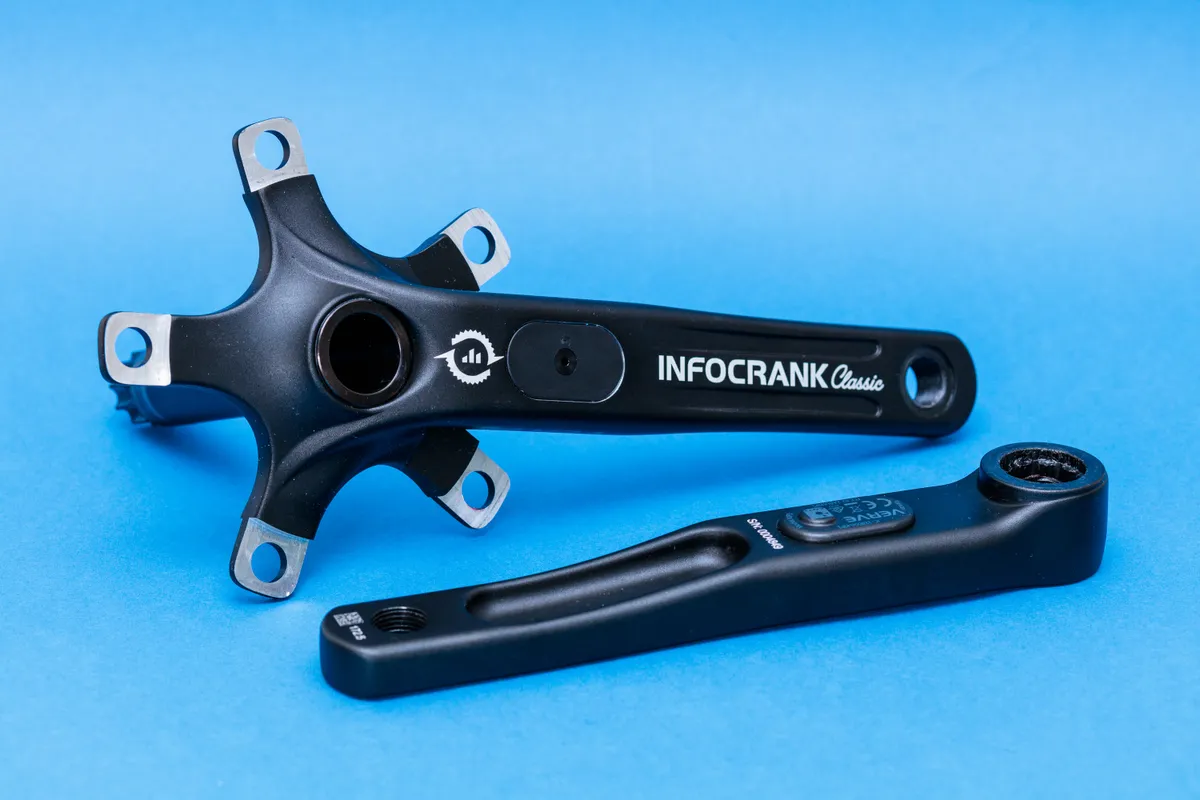
- Type: Power meter crank
- £1,281.84 / $1,778.76 / €1,471.02 as tested
- Accurate power data and robust build quality
- No Bluetooth support and relatively heavy
The Verve InfoCrank Classic power meter is built around the brand's own crank arms, which have a robust build quality.
The power meter's data accuracy is almost faultless and worked consistently throughout our testing with no data dropouts.
The power meter has a sample rate of 256 hertz. This is far beyond what most people will ever need, but will provide others with an incredibly in-depth look at their power output. It also needs no zero-offsets, apart from when being installed on a new bike or after its batteries are changed, making this a very hassle-free option.
The power meter uses four coin cell batteries – two in each arm – for a claimed battery life of 500 hours.
The cranks are relatively heavy and the Verve's own chainrings don't shift quite as well as Shimano, but overall this is a reliable, robust, hassle-free power meter that provides accurate data, making it feel like a proper tool.
Wahoo PowrLink Zero
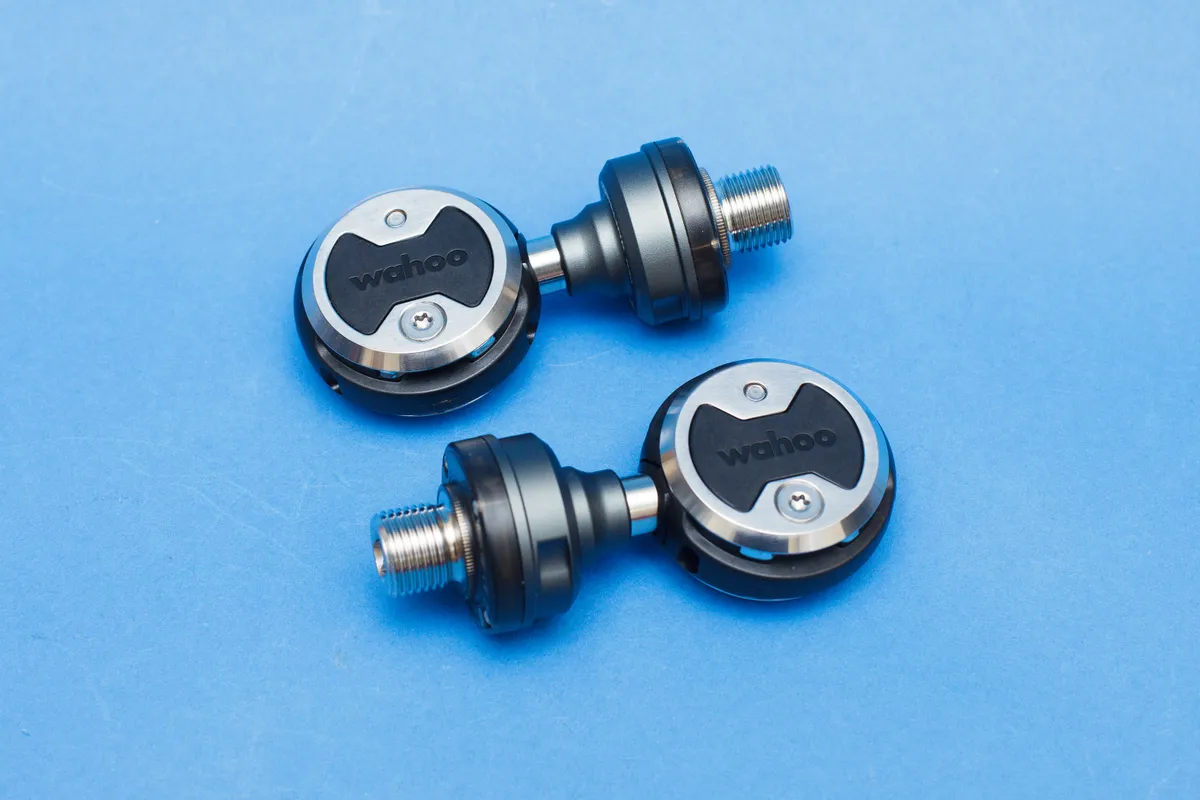
- Type: Power meter pedal
- £849.99 / $999.99 / €999.99 dual-sided as tested
- Trustworthy power recording
- Only one type of pedal body available
The Wahoo Powrlink Zero Speedplay power meter pedals bring watt measurement to the Speedplay range.
Our testing found their power data to be accurate, and it stood up against the market-leaders.
However, the PowrLink Zero Pedals only convey left/right balance and not advanced power metrics such as pedal smoothness and torque effectiveness.
Installing the pedals and connecting them to apps and bike computers is straightforward, yet setting up and adjusting the Speedplay cleats is less so. The cleats are also pretty pricey to replace.
Existing Speedplay users will appreciate the pedals’ range of float. Clipping in and out may be unintuitive to newcomers to the pedal system.
undefined
Also consider…
The following power meter scored fewer than four out of five stars in testing so hasn't been included in our main list, but it might tick the right boxes for you.
Power2Max NG Road power meter

- Type: Power meter spider
- €990 (spider only) as tested
- Highly customisable option for road and off-road bikes
- Generally accurate but zero-offset function unreliable
The Power2Max NG Road is a modular, spider-based power meter that can be set up with a wide range of cranks and chainrings for use on and off-road. It also has a good battery life and one of the best warranties available.
On paper, this premium power meter looks great, but in testing, we found a few niggly things that hold it back.
Generally, it is user friendly and trouble-free, but there were issues with the zero-offset function and occasional power spikes. These spikes didn't knock our confidence in the data in the grand scheme of things, which was generally accurate, but they could be frustrating for shorter intervals.
There is much to like here, but there are many other power meters these days that come without the issues we experienced.
How I test the best power meters
Simon von Bromley – senior technical writer
I have been BikeRadar's chief power meter tester for several years and I also have extensive experience reviewing smart trainers, which record power, too.
My power meter testing takes into account accuracy, ease of installation, on-bike performance and likely long-term durability.
I cross-reference power meters from multiple brands against one another, enabling me to put the claimed accuracy levels to the test.
I test each power meter on a series of indoor rides and validate the data on outdoor rides.
When riding inside, I measure power from three sources – two on-bike power meters (for example, power meter pedals and power meter cranks and an Elite Direto XR smart trainer).
As a result, I get a feel for which – if any – are the outliers.
While outside, I always use two on-bike power meters simultaneously (again, using power meters measuring power from different locations on the bike).
This helps me determine whether the lines on the graph (a trace of your power output across a ride) match up or not.
With time and lots of riding, I build up a catalogue of evidence to say whether a power meter will consistently produce accurate data you can trust.
Power meter buyer’s guide | How to choose the best power meter for you
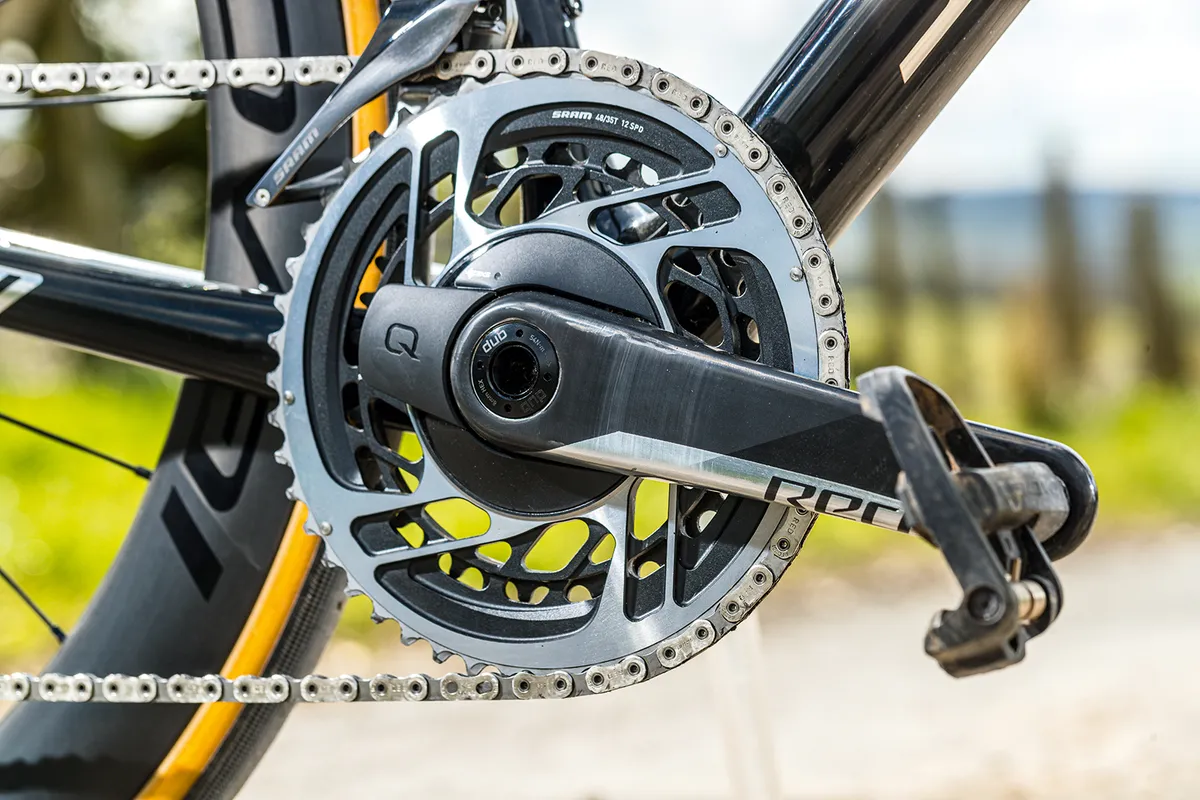
Buying a power meter can be a minefield, with a wide range of brands offering products at a variety of price points.
You also have single-sided and dual-sided power meters, and a decision to make as to where you want to place the unit and, in turn, measure power in the bike.
With manufacturers making a range of complicated claims, knowing which stand up to scrutiny is vital. As with any measurement device, accuracy is critical. After that, comes ease of use and reliability.
And, while prices have certainly come down, a power meter can still be a significant investment.
Choose well, though, and you should be rewarded with years of reliable service. Luckily, we’re here to help you do just that.
What is a power meter?
A power meter is a set of moving scales that measure your power output using a calculation of torque (how hard you're pushing the pedals) multiplied by cadence (how fast the pedals are turning – or revolutions per minute).
Your power is measured in watts (one watt equals 1 joule per second), giving you a precise calculation of how much energy you're putting through the pedals at any given moment.
With this knowledge, you can calculate your training load, target precise effort levels through your training zones, track improvements in your fitness, determine how many calories you’re burning, and more.
Combine this data with information from a cycling computer and heart rate monitor and it can be a very powerful tool in the right hands.
Do you need a power meter?
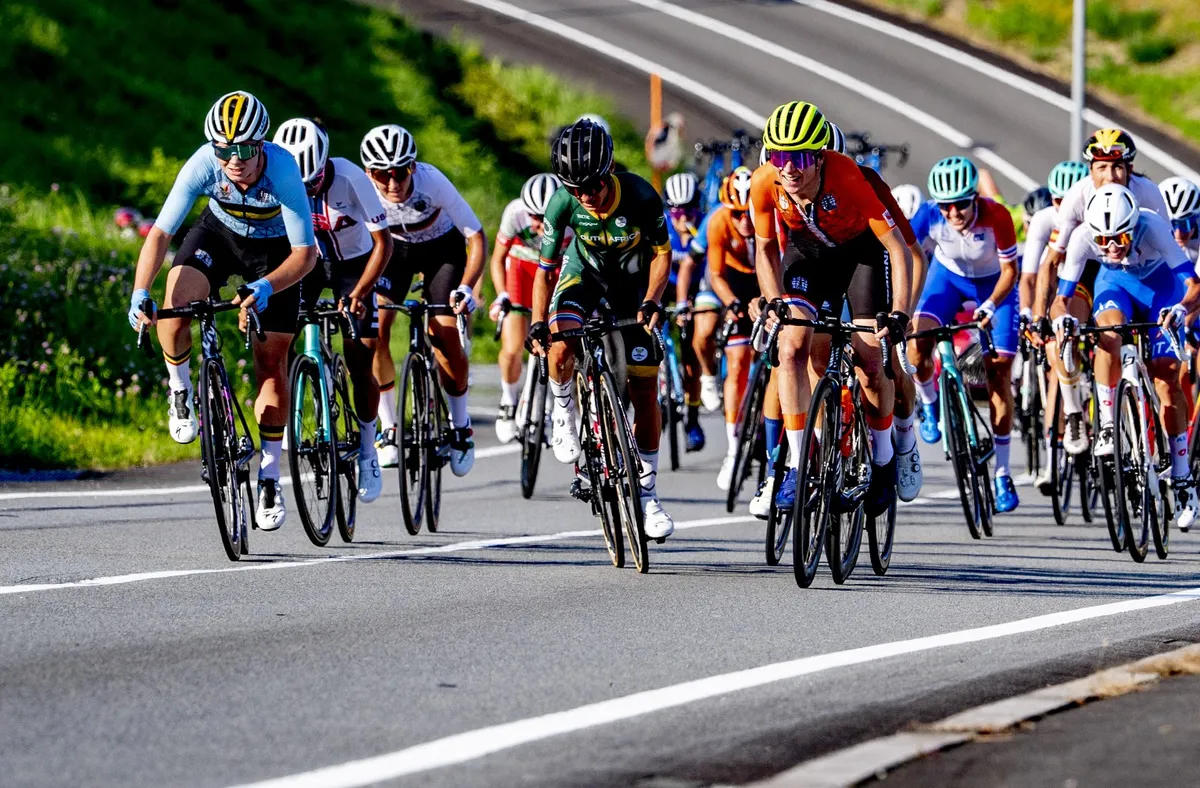
Power meters are all the rage right now and are arguably a tech innovation that has changed road cycling, but do you actually need one?
A power meter is, first and foremost, a tool designed to improve training and racing.
If you don’t plan to train with power to perform structured workouts, test your fitness (whether that be through an FTP test or Critical Power) or using it to pace yourself during races or big rides, a power meter perhaps isn’t worth the outlay.
Of course, it may be that you just want to know how much power you produce relative to everyone else – and there’s nothing wrong with that.
How do power meters work?

Power meters typically work by measuring the force on a component (pedal axle, crank arm, spider) using strain gauges. They then convert this to power by multiplying it by the angular velocity (or cadence) of that component. As we’ve already covered, power is measured in watts.
This data is transmitted wirelessly to a head unit via the ANT wireless frequency, and some power meters also have Bluetooth for pairing with a smartphone.
Most power meters are relatively easy to use: you pair it with your head unit the first time you use it, then just ride. On subsequent rides, your head unit will remember the power meter and deliver data as soon as you start riding.
However, most power meters will also require you to perform a zero-offset at regular intervals, so it knows to report zero when no torque is being applied to the pedals.
Power meter types: crank vs spider vs pedal power meters

If you’ve decided you do want a power meter, the next thing to consider is where you want it on your bike. Typically, crank, spider and pedal power meters are the most common options.
What kind of riding you do and what compromises you’re willing to make with bike components will, to an extent, narrow your options considerably.
If you only need power data on a road bike, then the options are wide. If you want to use the same power meter across multiple bikes and for multiple disciplines, your options become more limited.
A power meter based around one of the best road bike pedals wouldn’t be ideal for use on your gravel bike or mountain bike, for example.

Ultimately, the perfect power meter doesn't exist – there is no one-size-fits-all solution for every bike and type of riding.
Take crank-based and spider-based versus pedal-based power meters, for example. Pedal threads are the same on practically every crankset, meaning pedal-based power meters can be attached to almost any bike, with no modifications required.
A crank-based or spider-based power meter, on the other hand, might require you to swap the bottom bracket on your bike in order to make it compatible with the new axle.
If you have multiple bikes that you want to measure power on, the cost of converting them all to the same bottom bracket standard could quickly add up.
Cranks also take a few minutes longer to swap between bikes than pedals, and the bolt-circle diameter might be too large for use on a mountain bike if you wish to use chainrings smaller than 34 teeth.
With pedal-based power meters, though, you’re limited to using the pedal body types that the power meter is compatible with. For some models, that may only be one road pedal standard, but even for those with interchangeable pedal bodies, not every cleat and pedal system is catered for.
Power meter accuracy
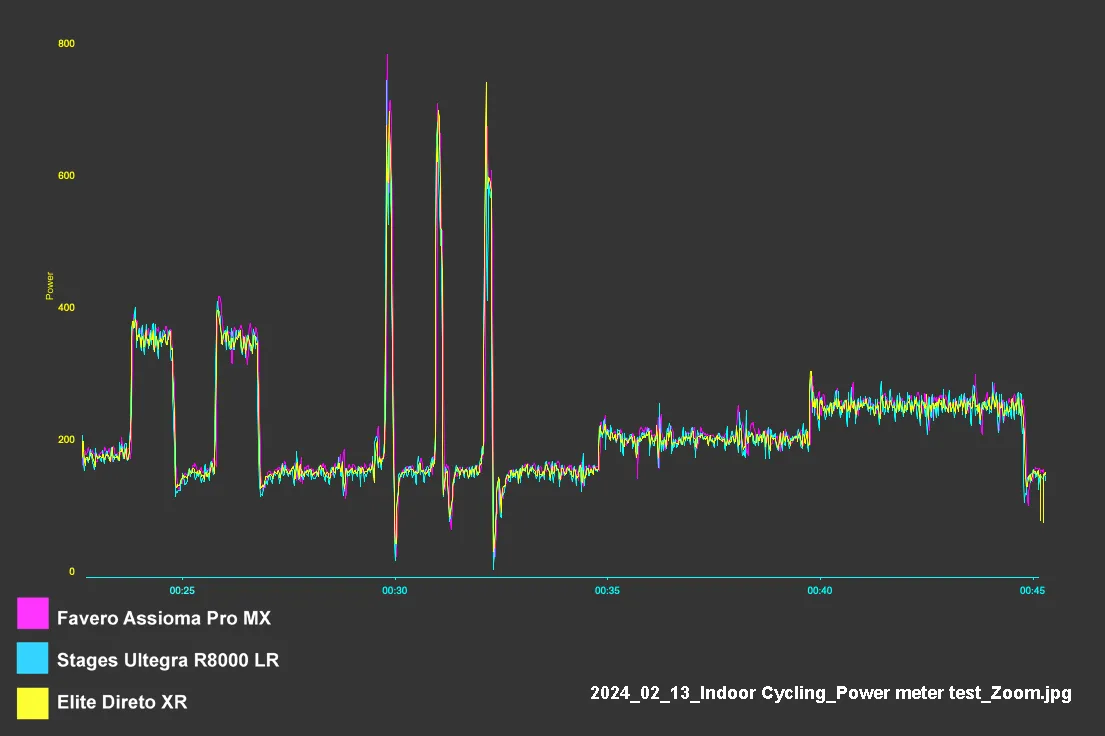
Most manufacturers will claim their power meters are accurate to within /- 1 to 2 per cent.
Typically, the more expensive a power meter, the tighter the claimed margin of error will be (though, again, this is not always the case).
There are occasionally differences between what a brand claims and what the product delivers, which is why we rigorously test power meter accuracy.
Consistency is also paramount.
A consistently inaccurate power meter is like a ruler with an inaccurate scale. Perhaps fine in isolation, but not much use for comparing to any other source.
If you ever upgrade to another power meter in the future, for example, then having used an inaccurate power meter can render historical performance comparisons meaningless.
Likewise, if the inaccuracy manifests as an underestimation of your true total power, you could find yourself at a significant disadvantage compared to your competitors when racing on Zwift or other indoor cycling apps.
Head unit

Once you have a power meter, you’ll need something to capture all of the data being transmitted.
While many power meter brands offer dedicated apps for recording data on a smartphone, a dedicated ANT compatible bike computer is a better option.
It can be useful to have one with a reasonably large screen to fit all the data fields you want on.
How much should you spend on a power meter?

As with anything, cheaper power meters often come with compromises compared to more expensive options.
The largest compromise offered by many power meter brands comes in the form of single-sided power meters.
Because they only measure the power output of a single leg (this figure is then doubled to estimate total power), and therefore only require half the electronics, they tend to be significantly cheaper.
The accuracy of their total power data produced depends on your left/right power balance.
For example, if your right leg is stronger than your left and you have a left-only power meter, your power meter will underestimate your total power (and vice versa).
This reduces the accuracy of your performance data (personal records, training load, calories burned and so on). It would also be a performance disadvantage in a Zwift race unless you have another, more accurate, power source, such as one of the best smart trainers.
Therefore, true dual-sided power meters are typically the more expensive options, with spider-based power meters often sitting somewhere in the middle.
Ultimately, how much this matters will depend on what you want from your power meter and how much you're willing to spend.
What data do you need?

Besides recording power output and cadence, the best power meters offer more advanced metrics.
Left/right power balance
Left/right power balance is a measure (or estimation, depending on which power meter you use) of how much power each leg is contributing to the total power being produced. This is usually displayed on head units as a percentage split.
True dual-sided power meters consist of two separate power meters that measure each leg independently and combine the data from each to give a precise total power.
If you do have a large imbalance, perhaps due to injury or poor bike fit, this may be something you can target to improve with the use of a dual-sided power meter.
Humans are generally not symmetrical, so having a left/right power imbalance is common. It can change during a ride, due to fatigue or effort level, for example.
Pedal smoothness
Pedal smoothness measures how smoothly force is applied throughout each full, 360-degree rotation of the crank.
A perfectly smooth pedal stroke, where the power is applied evenly throughout the entire rotation, would give a pedal smoothness reading of 100 per cent, with each leg being assigned a separate score. Most cyclists, though, will see a pedal smoothness reading of between 10 and 40 per cent.
Though there are claims that improving pedal smoothness can improve your performance, a 100 per cent pedal smoothness score isn’t desirable.
This is because the majority of the force should be generated on the downstroke, to take advantage of the biggest muscle groups in your lower half, the glutes and quadriceps.
Torque effectiveness
Torque effectiveness measures how much of the force (torque) being generated is pushing the pedal or crank arm forward. Like pedal smoothness, this is measured as a percentage and each leg is measured separately.
A torque effectiveness of 100 per cent for both legs would mean all your effort is going into pushing the pedals forward, though this is difficult to achieve in practice.
Matt Rowe, of Rowe and King cycle coaching, says we should aim for a torque effectiveness of more than 60 per cent. Regardless of where you sit, it's claimed that improving this metric makes your pedal stroke more efficient.
Post-ride analysis

Once you’ve finished your ride, you’ll need dedicated software to review the data. Fortunately, there are many options available among the best cycling apps.
You can use these programmes to calculate your training load and progress, track how many calories you’re burning, review your personal records and more.
Those with Garmin Edge cycling computers, for example, can use the company's online platform, Garmin Connect. This free service presents a variety of metrics in an easy-to-follow format and incorporates insights into your current fitness and training load via its Training Status feature.
On Strava such features are reserved for premium subscribers.
TrainingPeaks may best serve cyclists following a training plan. This app has a vast array of in-depth analysis tools for you (and your coach, if you have one) to monitor your fitness.
Golden Cheetah is a free offline software package incorporating a huge range of data analysis tools.
